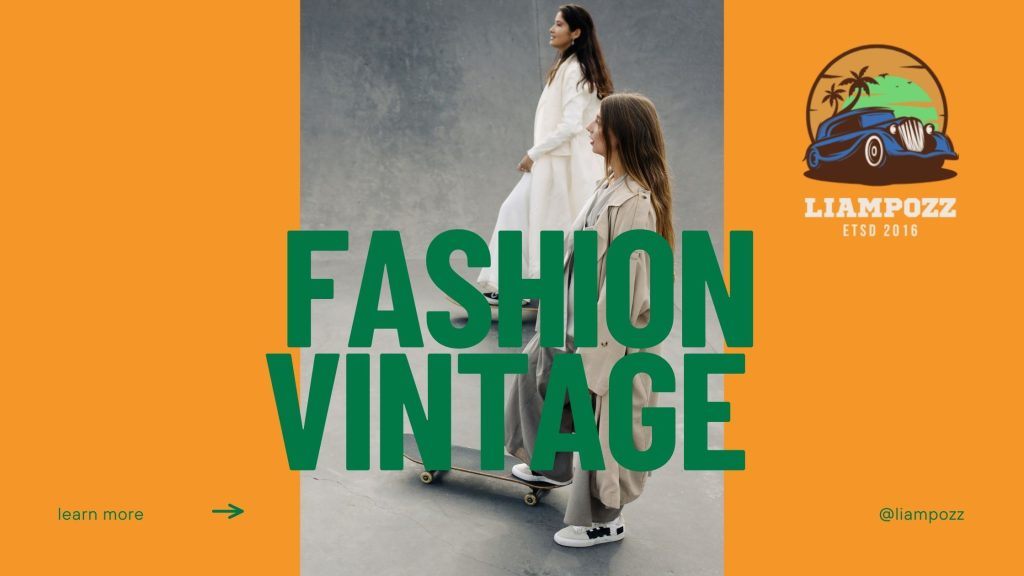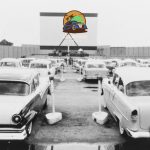Popular vintage fashion eras refers to clothing and accessories from previous decades that have retained their charm and appeal over time. Each era has its unique style, reflecting the cultural, social, and artistic influences of the time. In this article, we will explore some of the most popular vintage fashion eras that continue to inspire designers and fashion enthusiasts today.
The Roaring Twenties (1920s)

was a time of great social and technological change. Advances in technology, such as the radio and the automobile, led to a new era of American culture. The Jazz Age was a time of great optimism and progress, and the economy boomed. The 1920s were also a time of prohibition, when the sale and consumption of alcohol was banned.
The decade began with the end of World War I. America was a strong and prosperous country, and the economy was booming. In 1919, the 18th Amendment to the Constitution was ratified, outlawing the sale and consumption of alcohol. The amendment was called prohibition, and it led to a new era of American culture.
The 1920s were a time of great change. Technology advanced rapidly, and new inventions and technologies, such as the radio and the automobile, led to a new era of American culture. The Jazz Age was a time of great optimism and progress, and the economy boomed. The 1920s were also a time of prohibition, when the manufacture, sale, and transportation of alcoholic beverages were illegal.
The prohibition laws were largely unsuccessful, and the prohibition era is often remembered for its bootleggers and gangsters. The prohibition era also saw the rise of organized crime, as gangs battled for control of the illegal alcohol trade. The most famous gangster of the prohibition era was Al Capone, who rose to power in Chicago.
The prohibition era also saw the rise of jazz music, as jazz clubs sprang up in cities across the country. The most famous jazz club of the prohibition era was the speakeasy, which was a hidden nightclub where you could buy alcoholic beverages. The speakeasy was a place where people could let loose and enjoy the new, exciting music of the jazz age.
The 1920s, also known as the Roaring Twenties, was a period of dramatic social and cultural change. Women embraced newfound freedom and independence, and their fashion choices reflected this spirit. The iconic flapper look emerged during this era, characterized by dropped waistlines, loose-fitting silhouettes, and shorter hemlines. Fringed dresses, beaded embellishments, and feathered headbands were popular, as were cloche hats and T-strap shoes. The 1920s also witnessed the rise of Art Deco jewelry, with geometric shapes and vibrant colors.
The Golden Age of Hollywood (1930s-1940s)

The 1930s and 1940s were heavily influenced by the Golden Age of Hollywood, and fashion became synonymous with glamour and elegance. Women’s clothing featured figure-hugging silhouettes, emphasizing the natural waistline. Bias-cut dresses, wide-brimmed hats, and fur accessories were all the rage. The iconic little black dress, popularized by Coco Chanel, became a timeless staple during this era. Men’s fashion during this period was characterized by tailored suits, wide lapels, and fedora hats.
was an era of great artistic achievement in cinema. The studios were flush with cash and employed the best writers, directors, and actors in the business. This led to some of the most creative and memorable films ever made.
However, this era was also marked by a great deal of censorship. The Motion Picture Production Code, also known as the Hays Code, was a set of guidelines that the movie studios had to follow in order to get their films approved for release. The Code was created in 1930 by the Motion Picture Association of America (MPAA) in response to public outcry over the increasing amount of violence and sexual content in movies.
The Code was not officially enforced until 1934, but the studios began to adhere to its guidelines as early as 1931. The Code was officially abolished in 1968, but its influence can still be seen in many films made after its repeal.
Some of the most famous examples of films that were censored by the Hays Code are The Maltese Falcon, The Big Sleep, and Casablanca. The Hays Code was a set of moral guidelines that were set up in order to prevent films from being too obscene or vulgar. The code was put into place in 1930 and was enforced until 1968.
One of the most famous scenes that was censored by the Hays Code was the “Rick’s Café Américain” scene in Casablanca. In the scene, Rick Blaine (Humphrey Bogart) sings the song “La Marseillaise” with the French Resistance. The scene was censored by the Hays Code because it was considered to be too patriotic. In order to get the scene approved for release, the filmmakers had to change the song to the less patriotic song “La Chanson de l’Exilé”.
In the scene, Brigid O’Shaughnessy (played by Mary Astor) tries to seduce Sam Spade (played by Humphrey Bogart) in order to get information from him. However, the censors believed that the scene was too sexually explicit and cut it from the final version of the film.
The “vamp” scene is often considered to be one of the most iconic scenes in film history, and it has been referenced in many other films and TV shows. The scene is also considered to be one of the first examples of a “ femme fatale ” in cinema.
The New Look (1950s)

The 1950s brought a change in fashion with the new look. This look was characterized by a nipped-in waist, full skirt, and padded shoulders. It was designed to make women look more curvaceous and feminine. This look was popularized by Christian Dior and his “New Look” collection.
The 1950s marked a return to femininity after the austerity of World War II. Christian Dior’s “New Look” revolutionized fashion, introducing full skirts, cinched waists, and emphasized bustlines. The hourglass figure was celebrated, and women adorned themselves in vibrant colors and playful prints. Circle skirts, petticoats, and twinsets were popular choices. Accessories such as gloves, pearls, and cat-eye sunglasses completed the polished look. Men’s fashion in the 1950s saw a resurgence of classic tailoring, with suits featuring broad shoulders and slim waists.
The Swinging Sixties (1960s)

Were a time of change and growth for America. The country was coming out of the conservative 1950s and entering into a time of new ideas, fashion, and music. The era was named for the popular swing music that was played during the time.The 1960s were a time of great social change in America. The civil rights movement was in full swing, and people were protesting for equality. The Vietnam War was also taking place, and many young people were protesting the war.
The fashion of the 1960s was also very different from the 1950s. Women started wearing shorter skirts and pants, and men started wearing tighter jeans and shirts. The popular hairstyles of the time were the beehive and the afro. The music of the 1960s was also very different from the music of the 1950s. The Beatles and the Rolling Stones were popular bands during the time, and their music was very different from the music of the 1950s. The Beatles played rock and roll, and the Rolling Stones played blues-rock.
The 1960s was a decade of rebellion and revolution, reflected in the bold and boundary-pushing fashion choices. The youth-driven counterculture movement influenced fashion, breaking away from the conservative norms of previous eras. Women embraced mini skirts, go-go boots, and psychedelic prints. British fashion icons like Mary Quant and Twiggy popularized the mod style, characterized by geometric patterns, shift dresses, and bright colors. Men’s fashion in the 1960s saw the emergence of the “peacock revolution,” with flamboyant patterns, bell-bottom pants, and Nehru jackets.
The Bohemian Seventies (1970s)

was a time of creativity and change in the arts. Music, fashion and art all experienced a renaissance of expression. This was a time when people were no longer content to accept the status quo and embraced new and innovative ideas. The Bohemian Seventies was a time of creative rebellion. Music, fashion and art all experienced a renaissance of expression. This was a time when people were no longer content to accept the status quo and embraced new and innovative ideas.
The 1970s embraced a more relaxed and bohemian style, influenced by the hippie movement and the rise of disco culture. Women’s fashion featured flowy maxi dresses, bell-bottom pants, and peasant blouses. Earthy tones, paisley prints, and fringe details were prevalent. Platform shoes and wide-brimmed hats were popular accessories. Men’s fashion in the 1970s saw a mix of casual and flamboyant styles. Bell-bottom pants, wide lapel suits, and oversized collars were all the rage. The iconic leisure suit and aviator sunglasses were must-haves.
Conclusion
Vintage fashion eras continue to inspire and shape contemporary fashion trends. The 1920s flapper, the elegant Hollywood glamour of the 1930s-1940s, the feminine New Look of the 1950s, the rebellious mod style of the 1960s, and the bohemian chic of the 1970s are all popular choices for fashion enthusiasts looking to add a touch of nostalgia to their wardrobe. These eras have left an indelible mark on fashion history and continue to captivate us with their unique styles and timeless appeal. Whether you’re drawn to the elegance of the Golden Age or the free-spiritedness of the Swinging Sixties, vintage fashion allows us to celebrate the past while making a statement in the present.





